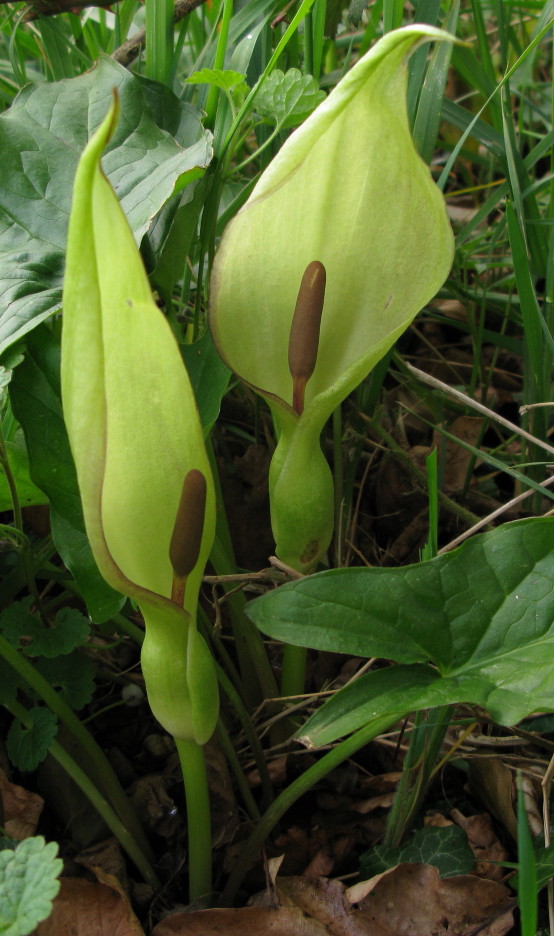
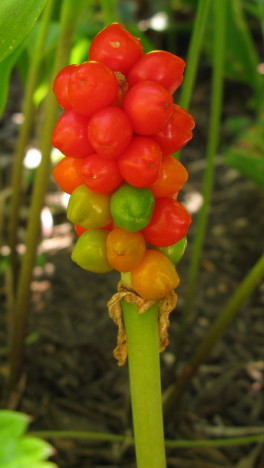
| Cuckoo-pint (Lords-and-Ladies) | Arum family |
| Arum maculatum | Araceae |
Cuckoo-pint (pronounced to rhyme with Mint) has a Cunning Plan for fertilisation.
In spring it produces an inflorescence with a pale green hood and a chocolate-purple round spike.
The spike gives off an unpleasant smell of rotting meat, which attracts small flies and beetles.
In their haste to get at the meat, the insects fall down the slippery sides of the hood to the bottom,
where they are trapped by a ring of hairs.
Unlike a pitcher plant, they don't get eaten,
but are held to ransom until they do a specific job. Trapped in the bottom, where the male and female
flowers are located, they first pollinate the female flowers with any existing pollen, and the next day
they get thoroughly doused by pollen produced by the male flowers. Then the hairs wither and the insects
can escape to visit another plant. The hood and spike wither away shortly afterwards, leaving a stalked head
of berries which turn from green through orange to scarlet in July-August.
It also has smart glossy arrow-shaped leaves
from quite early in the year, which may have purple spots.
Because of the shape of the inflorescence, it has several alternative names, such as
Lords-and-Ladies, adder's meat, bulls and cows, dogs' cocks, preacher-in-the-pulpit, wake robin, kitty-come-down-the-lane-jump-up-and-kiss-me.
The prudish Victorians omitted it from their flower guides due to its suggestive shape.
In Elizabethan times, the starch from the root was used to stiffen linen, especially ruffs, hence it was also known as starchwort.
 |
|
 |
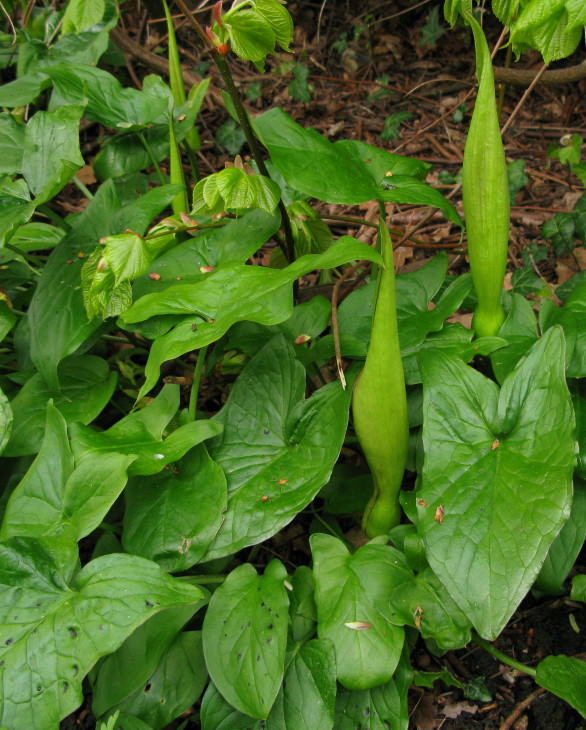 |
|
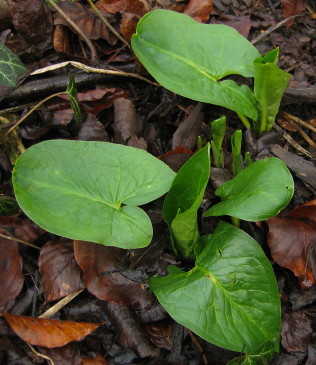 |
| Unfurled hoods and glossy arrow-shaped leaves, some with purple spots |
Early leaves |
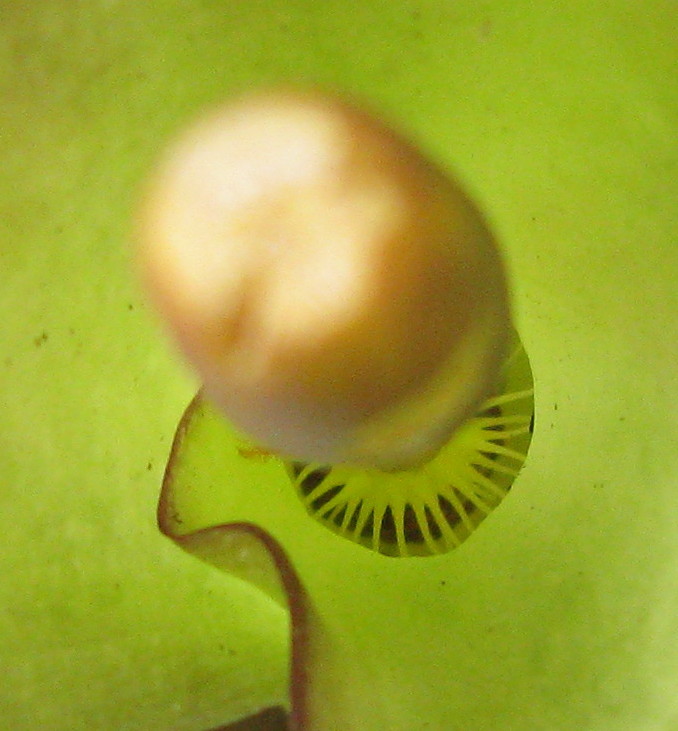 |
| Inner ring of hairs used to trap insects |
|
Technical Information
Perennial herb, 30-50cm tall from a tuber Leaves: arrow-shaped on long stalks, glossy green, sometimes purple-spotted, appearing in late winter Inflorescences: pale green hood, rolled up at the base to form a cup, with a purple or chocolate-coloured erect club (spadix); the flower parts hidden in the cup. In late summer these wither away to leave a stalked head of scarlet berries. Flowering time: April-May, Fruits July-August Habitat: Woods, hedgebanks Distribution: Common throughout England and Wales, rarer in Scotland |